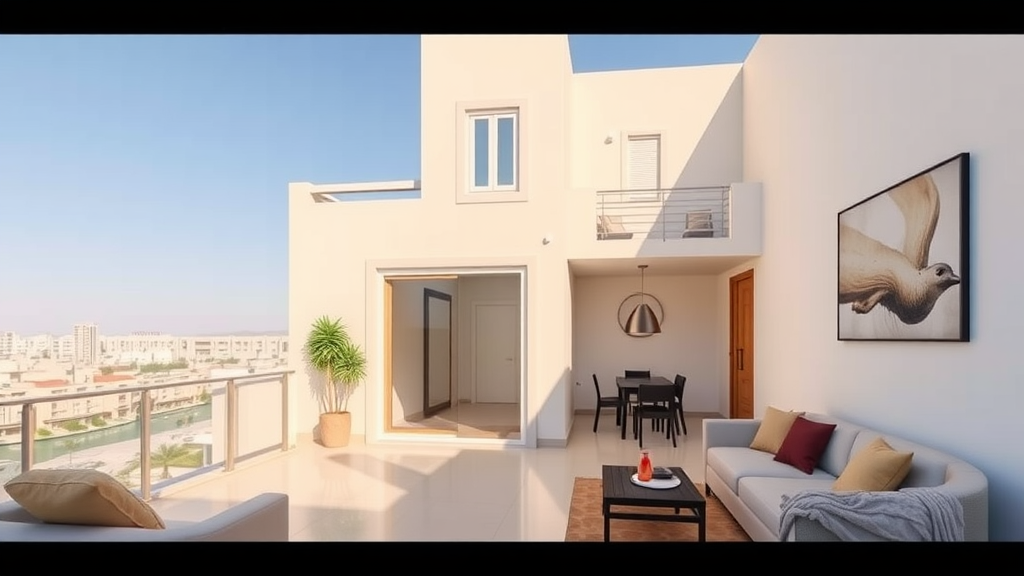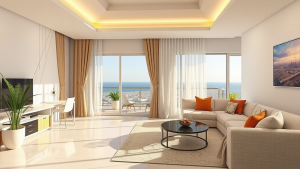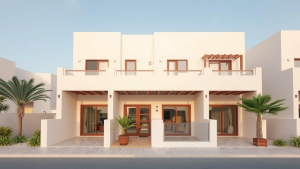Essential accessible home features for retirees: enhancing safety and comfort
As you enter retirement, your living space becomes ever more crucial for your well-being. Making your home accessible should be a priority to enhance both safety and comfort. Here are essential features to consider when ensuring your home is suitable for your retirement years.
Single-story living
Choosing a single-story home or converting your existing space can greatly reduce the risk of falls and injuries. Stairs can be a significant challenge as you age. A layout that eliminates stairs makes daily activities much easier. Look for a home with wide doorways and open spaces to facilitate mobility devices if needed.
Grab bars and railings
Installing grab bars in areas like the bathroom and stairways can provide vital support. Make sure they are securely anchored to help you maintain balance. Consider adding railings to both indoor and outdoor staircases for safer navigation. These simple adaptations can significantly enhance your safety.
Non-slip flooring
Safe flooring is a must. Opt for non-slip surfaces in areas such as kitchens and bathrooms, where water spills are common. Avoid rugs that can easily slide or present tripping risks. If you have carpets, ensure they are low-pile to avoid obstacles.
Bright lighting
Good lighting is essential for preventing accidents at home. Make sure hallways, stairwells, and entryways are well-lit. Consider using motion-sensor lights for added convenience. Installing light switches at both ends of a hallway makes it easier to see your way, even at night.
Accessible kitchen design
Cooking should be enjoyable, so it’s important to adapt your kitchen for ease of use. Ensure that counters are at a comfortable height and consider pull-out shelves for easy access. You might also want to invest in appliances that are easy to operate, like touch-control stoves and ovens.
Bathroom modifications
The bathroom is often one of the most hazardous areas for seniors. Walk-in showers can be an excellent solution, as they reduce the risk of slipping while entering a tub. Adding a shower chair can also make bathing safer and more comfortable. Install a raised toilet seat to make sitting down and standing up easier as well.
Emergency alert systems
Consider investing in emergency alert systems that allow you to call for help in case of a fall or medical emergency. Wearable devices or home systems equipped with voice recognition can provide peace of mind for both you and your loved ones.
Smart home technology
Today’s technology can help you maintain independence while ensuring safety. Smart home systems allow you to control lights, heating, and security with voice commands or through an app. These tools can enhance your home’s accessibility while saving energy and making life more convenient.
Wide hallways and doorways
As mobility may become an issue, having wide doorways and hallways is essential for ease of movement. This is particularly important if you plan to use a walker or wheelchair. Ensure that the furniture is arranged thoughtfully to allow for easy navigation through your spaces.
Outdoor accessibility
Don’t overlook outdoor areas. Ramps instead of stairs are ideal for easy access. Make sure walkways are even and well-maintained to prevent falls. If you have a garden, consider raised beds that allow you to garden without bending down too much, keeping you active and engaged in outdoor activities.
Climate control features
A comfortable home is a safe home. Ensure your heating and cooling systems are efficient and easy to control. Consider programmable thermostats that can be adjusted with minimal effort. Proper ventilation and temperature control will help keep you comfortable year-round.
By incorporating these accessible home features, you can create a living space that promotes safety, independence, and comfort during your retirement years. Prioritizing these modifications not only enhances your quality of life but also ensures that your home remains a sanctuary as you age.
Planning for future needs: how to adapt your home as you age
As you enter the golden years of retirement, it’s crucial to think about how your living space can adapt to your changing needs. A home that is welcoming and accessible can significantly improve your quality of life. Here are some essential considerations and features that can help you create a comfortable, safe, and functional living environment as you age.
Understanding accessibility in your home
Accessibility refers to the design features that allow individuals, regardless of age or ability, to navigate and utilize their living space with ease. When planning for the future, consider these aspects:
- Ease of Movement: Ensure that hallways, doorways, and rooms are wide enough for wheelchairs or walkers.
- Zero-Entry Entrances: Opt for no-step entrances to make it easier to enter and exit your home.
- One-Level Living: If possible, design living spaces on a single floor to avoid stairs.
Essential home features for safety and comfort
Specific features into your home design can greatly enhance safety and comfort. Here are key elements to consider:
- Grab Bars: Install grab bars in bathrooms, along staircases, and in other key areas to assist with balance and support.
- Non-Slip Flooring: Choose flooring materials that minimize the risk of falls, such as textured vinyl or cork.
- Adjustable Lighting: Incorporate bright, adjustable lighting that reduces shadows and enhances visibility throughout the home.
- Lever Door Handles: Replace traditional doorknobs with lever handles which are easier to operate, especially for those with limited hand strength.
Smart home technology
Integrating smart technology into your home can provide additional convenience and security. Here are some options you might find helpful:
- Smart Lights: Use voice-activated or app-controlled lighting systems to adjust brightness without the need for switches.
- Automated Door Locks: Consider smart locks that allow for keyless entry, enhancing security and ease of access.
- Emergency Alert Systems: Implement systems that can notify family members or emergency services in case of a fall or health issue.
Kitchen and bathroom adjustments
The kitchen and bathroom are essential areas where adaptations can be vital. Think about the following adjustments:
- Lowered Countertops: Design countertops at wheelchair height for ease of access while cooking or washing.
- Pull-Out Shelves: Implement pull-out shelves in cabinets to avoid bending and reaching excessively.
- Walk-In Showers: Consider a walk-in shower with a bench and grab bars to reduce the risk of falls during bathing.
Planning for future needs
When making changes, it’s essential to think about both your current and future needs. Here are some key planning tips:
- Consult with Professionals: Work with architects and designers who specialize in aging-in-place renovations. Their expertise will ensure you make the best choices.
- Plan for the Long Term: Choose designs that can accommodate potential mobility issues that may arise in the future.
- Involve Family: Discuss your plans with family members to ensure they understand your needs and can provide support if necessary.
Creating a supportive environment
A cozy home is not just about physical features; it’s also about emotional well-being. Consider these elements:
- Comfortable Furniture: Invest in furniture that combines comfort with accessibility, such as chairs with armrests or adjustable height tables.
- Community Engagement: Stay connected with friends and neighbors to foster a sense of belonging and security.
Adapting your home for your golden years involves thoughtful planning and design. By implementing these accessible home features, you can create a living environment that promotes independence, safety, and comfort as you age gracefully.
As you embark on this new chapter of life, ensuring your home is equipped with accessible features can greatly enhance your safety and comfort. Integrating essential accessibility modifications, such as grab bars in bathrooms, wider doorways, and lever-style door handles, will allow you to navigate your space with ease. These thoughtful changes not only reduce the risk of accidents but also contribute to a more enjoyable living environment.
It’s also crucial to consider your future needs when planning your home modifications. Your preferences and capabilities may evolve, so adopting a proactive approach will save you time and stress later on. Think about how adaptable your home is and whether it can accommodate your needs as you age. Features like step-free entrances, non-slip flooring, and easily accessible light switches can ensure your home remains functional and comfortable throughout the years.
Investing in an accessible living space isn’t just about physical comfort; it’s about maintaining your independence and enjoying your retirement fully. By thoughtfully considering your home’s accessibility, you create an environment that supports your lifestyle and personal well-being. Remember, making small adjustments today can have a profound impact on your quality of life tomorrow. Embrace this opportunity to craft a home that not only meets your current needs but also adapts gracefully with you into the future.
16% off – spacious 4 bedroom town houses in al kawther Hurghada under 200k — properties for british surfers
17% discount – investment 2 bedroom villas with swimming pools in al gouna Hurghada under 125k — properties for russian digital nomads












